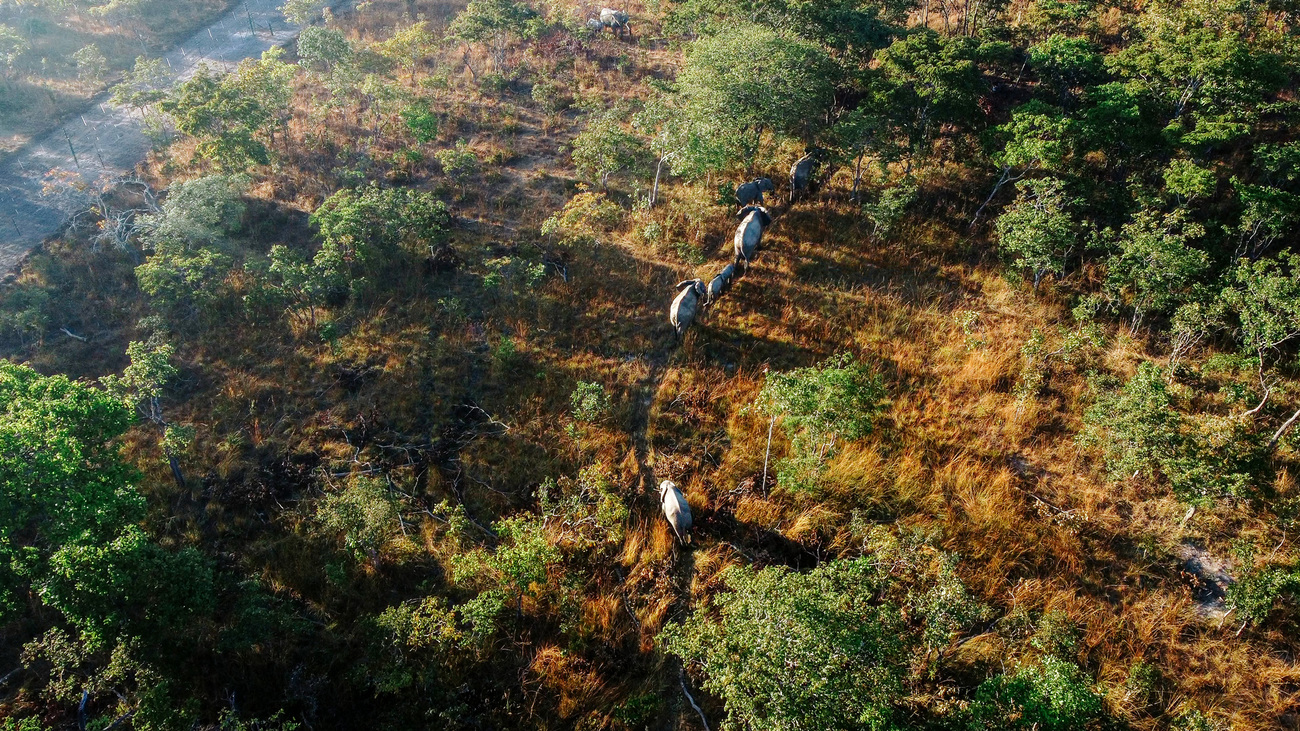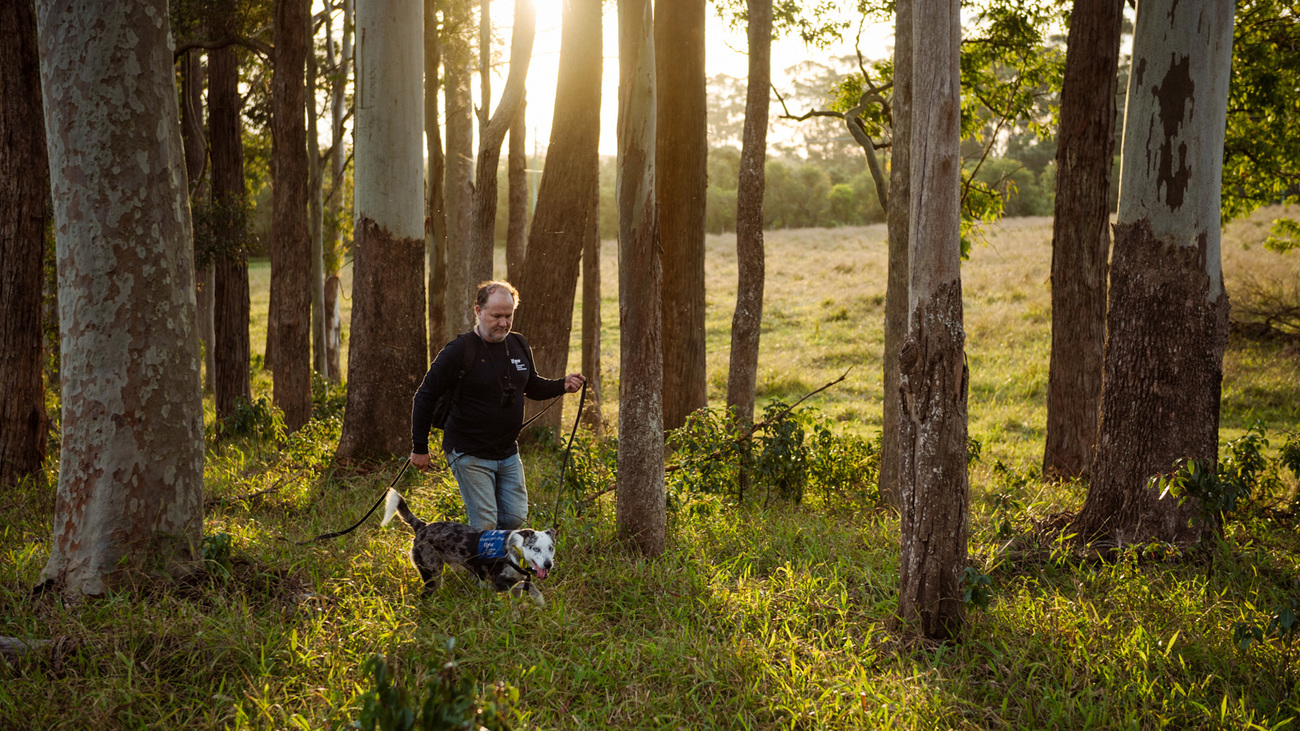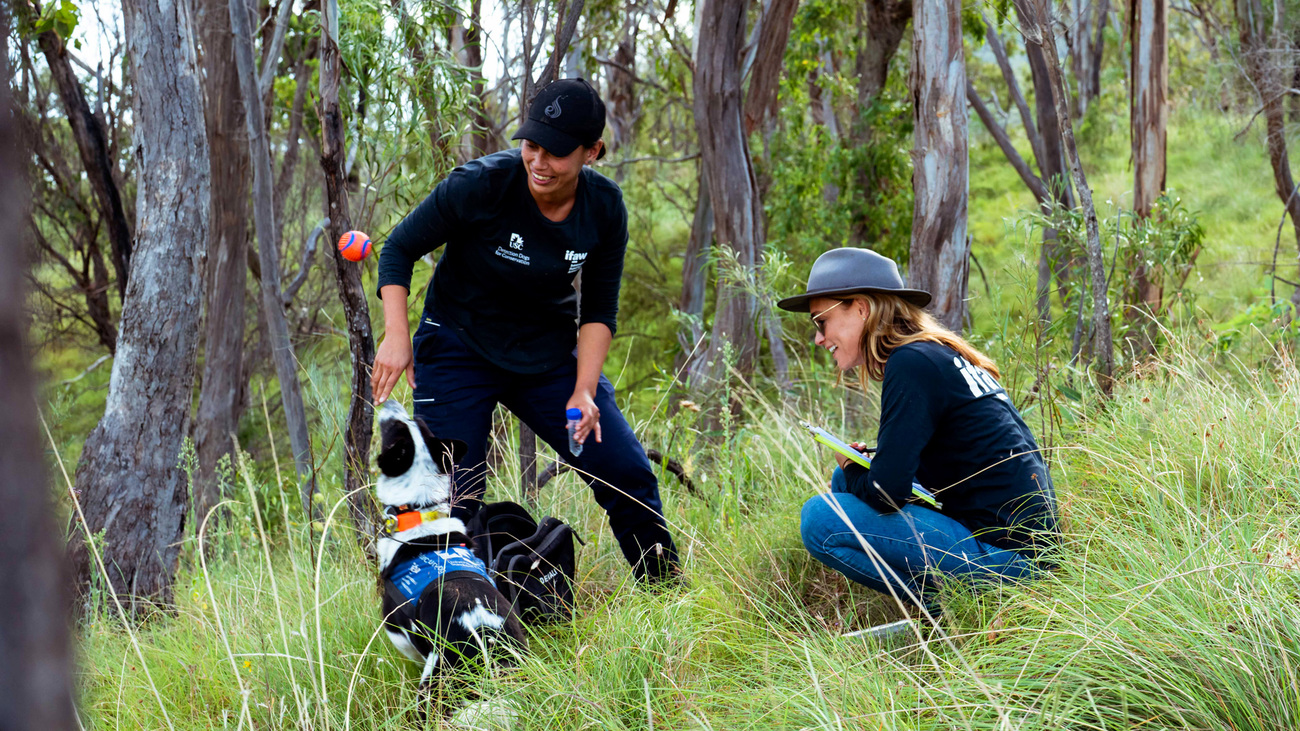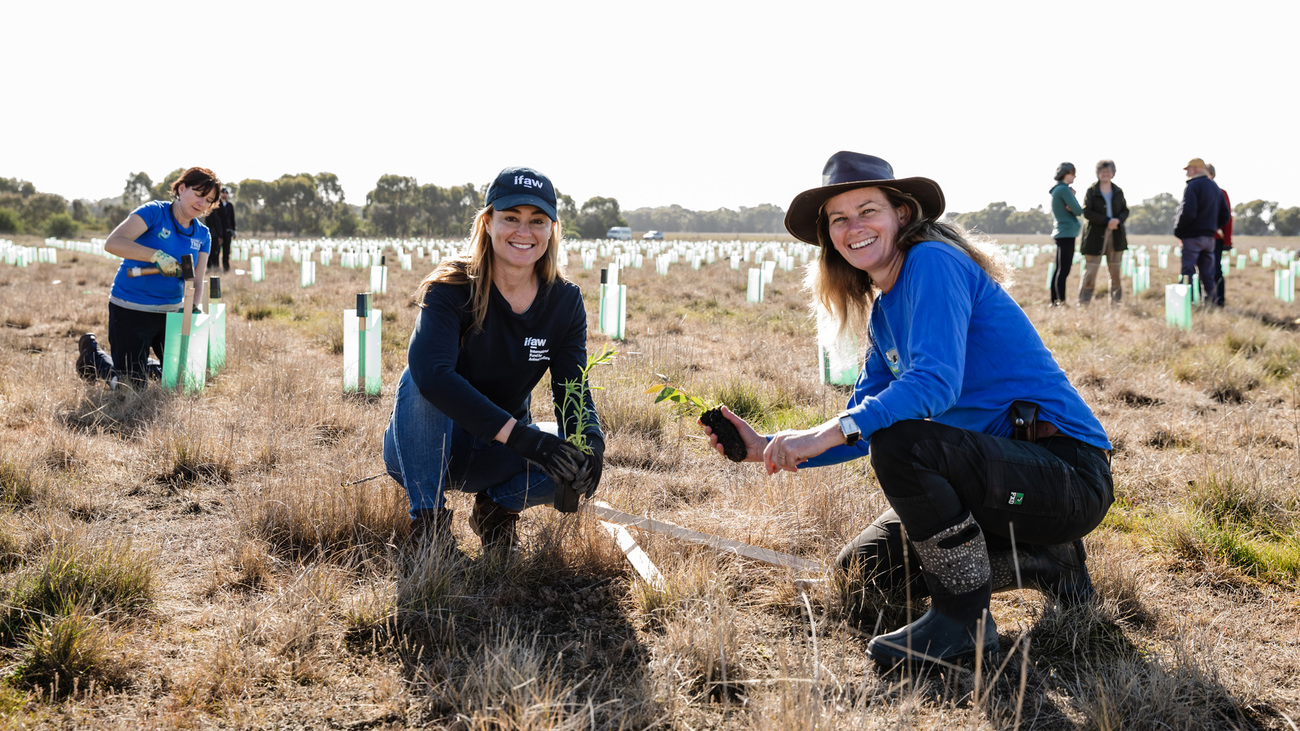landscape conservation
landscape conservation
IFAW’s Landscape Conservation programme continues addressing the ever-increasing impact of human activities on wildlife and natural resources. Wildlife and ecosystems in IFAW priority landscapes face major threats that affect their conservation status, including habitat loss and fragmentation, poaching, climate change and human-wildlife conflict. Our integrated approach creates solutions that promote long-term sustainable ecosystem management, while also benefiting indigenous and local communities and enhancing coexistence with wildlife.
Across our priority landscapes, we continue supporting antipoaching efforts to secure wildlife and their habitats, engaging communities and empowering people through sustainable livelihood opportunities. We support improved wildlife protection by investing in ranger training, patrol kits, mobility, infrastructure and operational support. This has resulted in an 86% decrease in wild animals being poached in landscapes in which IFAW operated in FY22.
Our mission has never been more important and urgent, and it will not be easy or quick, but at IFAW we are committed to ensuring that all wildlife species thrive in the landscapes we help protect.
promoting long-term sustainable ecosystem management
improving living conditions for community wildlife rangers in Kenya and expanding Team Lioness
IFAW constructed two ranger bases at Risa and Lemomo in Amboseli, Kenya for the Olgulului Community Wildlife Rangers (OCWR). The modern housing units are a break from the traditional structures made from tin which get extremely hot during the day and extremely cold at night. The houses will ensure that rangers are adequately and comfortably housed, as they work around the clock to ensure wildlife is safe.
The housing unit at Lemomo base was officially opened by IFAW board members and trustees. For the first time in IFAW’s more than 50-year history, they gathered in Amboseli, Kenya to see and experience first-hand IFAW’s incredible work with communities to save wildlife. They met and interacted with staff and members of the local community and handed over a patrol vehicle to a member of Team Lioness who is the first and only woman ranger driver in Amboseli.
Through the support of the German foundation Margarete-Breuer Stiftung (MBS), Team Lioness expanded from eight to 16 members. MBS will cover the salary of the eight new members for the coming two years and has provided funds for fuel and repairs of vehicles and maintenance of the ranger facilities.
restoring wildlife and improving biodiversity in Kasungu National Park
Since 2015, IFAW has been working with partners in Malawi and Zambia to create secure habitats for elephants and other wildlife, laying the foundation for the translocation of animals to restore wildlife populations.
IFAW, with funding from the United States Agency for International Development (USAID), has completed the implementation of a five-year Combating Wildlife Crime Project (CWCP) in the Malawi-Zambia transboundary landscape. The project targeted Malawi’s Kasungu National Park as well as Zambia’s Lukusuzi and Luambe National Parks and adjoining community areas. The project began in 2017 and the USAID funding concluded in May 2022.
The project focused on cross-border collaboration and coordination, with law enforcement officers from Malawi and Zambia working together in the fight against wildlife crime. Other strategies included training, mentoring and equipping law enforcement officers with the necessary tools to enable them to carry out their responsibilities efficiently. Throughout the project, community participation was key.
The CWCP has successfully created a safer and more secure habitat, making it possible to begin translocating animals to restore wildlife populations. 691 animals, including 263 elephants were successfully translocated from Liwonde National Park to Kasungu National Park between June and August 2022. It’s anticipated that the addition of 263 elephants will ensure the long-term conservation of elephants in Kasungu. A wide variety of additional wildlife were also successfully translocated, including 80 buffalo, 128 impala, 33 sable antelope, 81 warthog and 109 waterbucks.
IFAW, together with Malawi’s Department of National Parks and Wildlife (DNPW) and African Parks (AP) translocated the animals as part of an initiative to maintain healthy habitats in Malawi’s national parks, establish viable elephant populations and ensure the prosperity of local communities living around the parks.
restoring habitats and creating wildlife corridors in Australia
Australia’s catastrophic Black Summer bushfires of 2019–20 put an international spotlight on the dangerous impacts of climate change. At the heart of recovery is community and connectivity conservation. That’s why, in mid-2020, IFAW joined forces with the Great Eastern Ranges (GER) to help promote community collaboration in landscape conservation by restoring habitats and creating wildlife corridors across 3,600 kilometres of Australia’s east coast.
We embarked on a 12-month critical bushfire recovery project to help communities, wildlife and landscapes heal. In March 2022, this was extended to support flood recovery efforts after catastrophic floods affected parts of New South Wales (NSW) and Queensland. The recovery projects targeted three priority landscapes that had also been affected by the Black Summer bushfires: the Lockyer Valley, Southern Border Ranges and Greater Blue Mountains.
In FY22, we continued rolling out these projects with GER and their network of regional and local conservation, Indigenous and community groups, scientific experts and private landholders. Our projects include helping three communities undertake fire and weed management as well as other environmental restoration activities in and along waterways and on land so the landscape can once again be a safe home for wildlife.
We also helped dozens of landholders identify the species of wildlife that live on their properties and enhance habitat suitability, for example by building and installing nest boxes. This gives wildlife greater space to move safely between properties, through community-established habitat corridors and their local landscape.
Complementary to this work is our koala health and resilience research project with the University of the Sunshine Coast’s (UniSC) Detection Dogs for Conservation (DDC) programme. Through this project, koala populations at risk can be identified and better conservation management strategies developed.
IFAW thanks all our donors, supporters and partners around the world who enabled our impact in the area of landscape conservation in FY22, with special acknowledgment of:
The Walt Disney Company
Big Life Foundation
Department of National Parks and Wildlife (Malawi and Zambia)
Community Markets for Conservation
Wild is Life
African Parks
David Rio
Kenya Wildlife Service
Amboseli Ecosystem Trust
Richard and Jenny Bugg
Steve and Laura Scully
Olgulului Ololarashi Group Ranch
Ilkimpa Community Conservation Association
Kitenden Conservancy Trust
Zimbabwe Parks and Wildlife Management Authority
Landscape Conservation in Oceania
analysing the health and resilience of koalas in burnt landscapes
IFAW and the University of the Sunshine Coast (UniSC) Detection Dogs for Conservation (DDC) team have been collaborating on a ground-breaking research project to discover how resilient koalas are to natural disasters and to improve conservation outcomes for the species.
Immediately after the bushfires, IFAW x UniSC koala detection dog Bear was deployed to search for surviving koalas on a property in southern Queensland (QLD). The property was significantly impacted by the catastrophic 2019-20 bushfires. While no koalas were found within the property at the time, Bear did find koalas in a nearby area affected by the same fire.
As part of the research project, koala scat detection dog Billie-Jean was later deployed to re-assess the property and found 21 fresh koala scat samples from eight individual koalas. The eight-year-old Australian koolie dog was deployed again in FY22 and found 12 samples.
The samples will be analysed, along with the hundreds of others collected from bushfire impacted sites across QLD and New South Wales (NSW) to give an insight into how the disaster impacted koala health, by looking at hormone levels, gut microbiome or pathogen prevalence. The research aims to determine how resilient koalas are after natural disasters and the recovery potential of koala populations.
The study will also inform research across Australia on why some koala populations– even those living in healthy habitats–are struggling to survive and how we can help secure their future protection.
planting a future for koalas, one tree at a time
As disasters become more prevalent, the koala, despite being a national and international icon, is in crisis. Excessive land-clearing is destroying forest habitat and forcing koalas to live in urban areas. Deadly encounters with cars, dogs and disease threaten their day-to-day survival. Every individual is vital to the survival of local populations and to the species as a whole. With so many koalas being rescued, treated, and rehabilitated, it is critical that there is a safe and secure habitat to release them into, to enhance chances of survival.
With seven partners across New South Wales (NSW), Victoria (VIC) and Queensland (QLD) we worked with four local communities and dozens of private landholders to restore wildlife corridors in these regions throughout FY22.
These corridors connect fragmented habitat to provide refuge and safe passage for koalas and other wildlife through the landscape. These corridors will also provide homes and food sources for native birds, gliders, possums, bats, bees and other insects.
In FY22, we planted more than 7,500 trees in Victoria’s East Gippsland Shire and Mornington Peninsula Shire with two community groups. In the Tweed Shire of NSW we planted 500 trees in collaboration with a local community group and council, and in Noosa, QLD, we worked with a Landcare group, council and Land for Wildlife landowners to plant 350 trees. In total, more than 8,400 trees were planted into seven hectares with the help of 200 volunteers across these three states. This brings the number of trees planted since the Black Summer bushfires to more than 30,000 and counting.
Our goal is to improve the long-term welfare and conservation of koalas and other wildlife by ensuring they have secure habitat to thrive in.
as wildlife and people run out of space, we’re creating Room to Roam
In FY22, we continued to make progress on our Room to Roam initiative, our innovative approach to conservation in Africa that consolidates many decades of IFAW work from the past, while outlining a bold vision for the future.
Climate change compounds the threat of broken landscapes, with animals like elephants risking their lives to travel further than ever for essential water and food to survive. Decades of conservation efforts have relied on human management and interference, which is often costly or temporary. We see a better solution.
Backed by 20 years of science and fieldwork, Room to Roam aims to ensure viable, stable, resilient elephant populations long into the future—and with little to no human interference. Through improved connectivity and secure habitats, we envision safe passages for elephants and other wildlife to move freely within their home ranges in East and Southern Africa. Through Room to Roam we are contributing to greater biodiversity, a natural resilience to climate change and a future where animals and communities can not only coexist but thrive.
We know what a healthy herd looks like and we believe Room to Roam is how we get there. In continuing more than two decades of IFAW scientific data and fieldwork, we will ensure not only the persistence of viable, stable elephant populations, but also the health of people and the planet at large.
community impact
Room to Roam doesn’t only help elephants and other wildlife—it also opens new opportunities for local communities to enhance their well-being and coexist with wildlife. Land outside of national parks belongs to communities and private landowners, including traditional leaders, conservancies and land trusts. When we engage communities in natural resource management—whether for ecosystem health and/or as an economic driver— they can be directly involved in planning and implementing long-term solutions.
The context of our work crosses borders, cultures and organisations, meaning that relationships with people are at the heart of our approach and are a key to success. Through Room to Roam, IFAW is forging partnerships with communities, traditional leaders, governments, private sector actors and other NGOs (non-governmental organisations) in a long-term plan to reconnect critical landscapes and allow wildlife and people to flourish.
facing challenges with a vision for the future
- 1.4 billion people live on the African continent, a number that is expected to double in the next 40 years.
- 400,000 savannah elephants remain in Africa, with just 330,000 elephants remaining in IFAW’s Room to Roam landscapes.
- Up to 70% of elephants’ range is outside of national parks and protected areas, making them vulnerable to poachers or humanwildlife conflict.
- More than 10,000 elephants are killed every year by poachers. Without bold and rapid action, some elephant populations could be poached to extinction within a generation.
To achieve our ambitious vision, we are fostering long-term partnerships with governments, wildlife authorities, communities, private sector actors and other NGOs in Kenya, Malawi, Zambia and Zimbabwe, with expansion planned in further elephant range states.
Stay in the know. Be ready to act.
You’ll receive news, updates on activities and on future giving opportunities. You can unsubscribe at any time.





